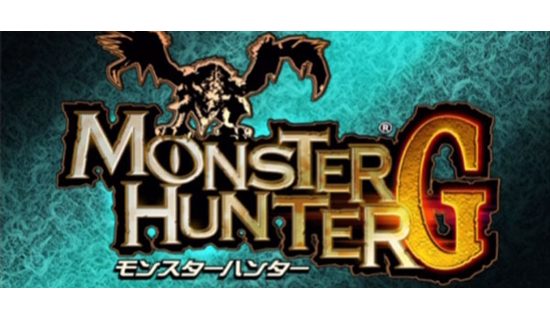Less than one year after the release of the original Monster Hunter, Capcom released the expansion: Monster Hunter G. From the moment Pugi (the adorable little pig that wanders around your house/the village from every game here on out) comes walking across the title screen snorting, the game shows us that we’re in for something more than your average expansion. In fact Monster Hunter G does everything that a good expansion should and more: It improves on some of the original game’s flaws, introduces conveniences that make it easier to play, and adds a lot of new content. It creates a template that all of the “G” expansions would follow from here on out.
Kotoko Farm is a new addition to the village that allows you to give a material that you’ve gathered on quests to the hard-working Felyne farmers to harvest, thereby producing more of that material over time. This saves the player a ton of time and provides them with a steady stream of basic materials (assuming that they maintain and upgrade their farm correctly). The staff of the Felyne Kitchen can also cook up a nice stat-boosting meal before a hunt. If the correct combination of foods are chosen, it can prove very valuable for players of all skill levels. The Training School is another new feature that caters exclusively to players who want a challenge. After selecting the monster that they’d like to face, the player will be provided with what is possibly the most sub-optimal setup of their chosen weapon type, along with a minimal amount of healing items. The player is then thrown into the field to hunt down their selected monster. It isn’t for the feint of heart! It really can’t be said what great quality of life improvements these three features are, and all of them will stay with the series in some capacity going forward.
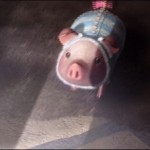 | 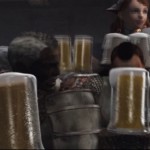 |
| Enter Monster Hunter G’s most fearsome creature of all: Pugi! | By “hunt and kill monsters” you actually meant drink, right? |
The variety of weapons that can be created for each weapon type have greatly increased, and with this greater variety comes two higher levels of weapon sharpness as well (blue and white). The Dual Swords that were featured in the US/PAL versions of the original Monster Hunter have even been brought into Monster Hunter G as well. The armor skill system has also been improved just as much as the weapons. Previously armor skills were static per armor set, but now each piece of armor has a certain amount of skill points for one or more skills. This not only gives skills to sets of armor that previously did not have them, but also allows mixing and matching of armor pieces from different sets to potentially result in a unique set of armor skills. Custom armor set crafting is a big part of high-level Monster Hunter play, and it this is where it was first made possible.
The monsters themselves aren’t without their changes either. Individual monsters now have sizes that are randomly assigned for each quest, reflecting in the actual size of the monster’s model on screen. Sub-species are also available for certain monsters, though they are essentially re-colors of the original monsters with slight changes to their behavior patterns. In addition to new quests added to the village (single player, or offline), a new difficulty level of quests called “G Rank” quests was added to the online mode only, offering the player greater challenges than previous High Rank quests did. Monster Hunter G’s servers for the online mode were sadly taken down along with the original game’s on 06/30/2011 in Japan.
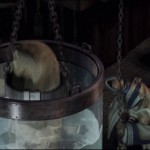 | 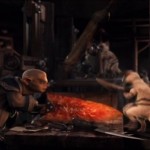 |
| A rare inside look as to how monster parts are stored and treated prior to making them into equipment | Seeing Felynes and…strange goblin men working together to forge weapons is such a beautiful thing! |
There were also many other small conveniences that were added to Monster Hunter G to make it quite a bit more playable than its predecessor. The player inventory and item box now have options to automatically sort their contents, and weapons and armor no longer require the player to have all of the materials in their character inventory in order to forge them. These may not see like they would make a big difference, but every little bit counts when compared to a game that was lacking many modern gaming conveniences at the time.
Unfortunately, not every big issue that the original game had was fixed by this expansion. The weapon control scheme is still the same obtuse one that utilizes the Dual Shock 2’s right analog stick to attack instead of face buttons (see the article on the original Monster Hunter for more details). Farming up monster parts still takes an absurdly long amount of time compared to the later entries in the series, making building even a single armor set a real exercise in patience.
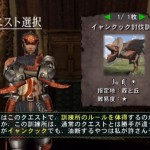 | 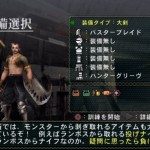 |
| Selecting your monster in the training quests…oh him again. | Selecting which awful configuration you want to fight your previously selected monster with! |
Players coming over directly from the first game will be glad to hear that their existing save data can be imported into Monster Hunter G. Those expecting nothing to be lost in the transfer will be disappointed though. Many of the minor items (potions, etc.) are not carried over directly, and not all quest completions are carried over due to a slight restructuring of quest order (accommodating for the insertion of new quests). All weapons and armor are carried over in tact though, as well as all of the various monster parts obtained from completed quests. Regardless of it not being a perfect transfer, players who even just a few hours into the first Monster Hunter game will definitely want to take advantage of this.
Something that careful observers will pick out are the very beginnings of Capcom realizing that Monster Hunter’s real strong point is its multiplayer: the introductory movie. Instead of featuring hunters fighting and running from monsters, it shows hunters interacting with one another and making their preparations in Kokoto Village. It also gives us an inside look into the jobs of those who are constantly assisting the hunters: The barmaids, Felyne assistants, and old goblin guys who forge the weapons and armor from monster parts. It really shows the gradual shift in focus toward a more multi-player focused Monster Hunter.
While Monster Hunter G makes the first generation of this series much more palatable, it probably won’t convince someone who found the first entry unplayable to jump into the series. Like all great series though, things will continue to gradually improve with each iteration. Players in search of the answer to the question “Where in the series should I start?” should probably still not settle on this entry. The answer to that question for a series like Monster Hunter is almost certainly to start with the latest entry.
